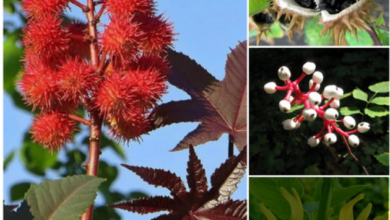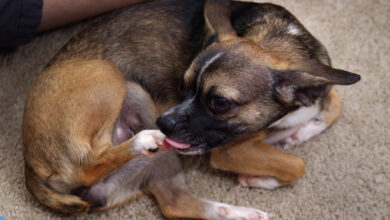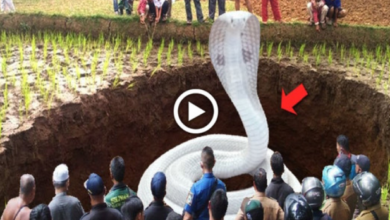
When it comes to heroic dogs, Balto is high on the list. The famous Siberian husky inspired a 1995 animated film and was immortalized as a statue in New York City’s Central Park for being part of a dogsled team that delivered lifesaving antitoxin to a remote Alaskan town that was struck by diphtheria in 1925. And now Balto’s DNA is offering new insight into how genetic diversity affects the health of dogs—past and present.
In a study published on Thursday in Science, biologists found that Balto’s genome is more diverse—and ultimately healthier—than that of most dog breeds today. His genes also suggest that he and his intrepid canine comrades in the 1920s had multiple traits that made them more fit to travel and survive in a harsh environment. The results reveal shifts over time not only in dogs’ genetics and ancestry but also in their genetic health.
“What we found is that Balto is more genetically diverse and genetically healthier than your breed dog of today but similar to those working Alaskan dogs that we have now—which is what you expect from a group that is still bred for work rather than the aesthetic phenotype that breed dogs are now held to,” says Katherine Moon, a postdoctoral researcher at the University of California, Santa Cruz, and co-lead author of the study.
Balto was part of an imported population of Siberian huskies bred for their speed, fitness and relatively small size. In January 1925 an outbreak of diphtheria (a serious bacterial infection that can be deadly if untreated, especially for children) was spreading in Nome, Alaska—a town that could only be reached by dogsled during the winter. Sled dog teams, including Balto’s, transported vials of diphtheria antitoxin in a 674-mile relay from Nenana, Alaska, braving intense winds and wind-chill temperatures of –85 degrees Fahrenheit. Using Balto as a representative of the 1920s Siberian huskies, Moon and her colleagues wanted to find out if that population had specific variations to their genes that made them such capable sled dogs.

The researchers sequenced DNA samples from Balto’s taxidermied specimen at the Cleveland Museum of Natural History. They compared the sequences with those of current living dog breeds, including three 21st-century sled dogs that ran in the Iditarod—a modern annual dogsled race that traces some of the trails of the 1925 antitoxin run. Balto’s ancestry is not very dissimilar from that of today’s Alaskan sled dogs, with dogs of Arctic origin sharing 68 percent of his ancestry. He also shares a small amount of common ancestry with Asian dog lineages. Balto’s genome additionally showed that he was around 55 centimeters tall at the shoulder and had a double coat of black fur—an insulating undercoat of short, dense hairs and a top coat of protective longer ones—and a white tuft on his chest.
The researchers also identified protein-altering, evolutionarily constrained variants—sequence changes such as mutations at a specific site of the genome that are highly conserved across many species because the alterations serve an evolutionarily advantageous function. Those unique variants relate to bone and tissue development, including skin thickness, body weight, coordination and joint formation. Balto’s variants suggest he had a phenotype, or set of physical traits, that was optimal for Arctic survival. “We were excited to see that,” Moon says. “It was striking in a good way. It was great to be able to see that phenotype that we predicted from his genotype is sort of consistent with what we knew about Balto already.”
The team further found Balto had an adaptation that helps digest starch—a trait that is not found in wolves but is relatively common in modern dog breeds. Although sled dogs’ traditional diet consists primarily of meat, Moon says Balto likely consumed foods rich in starch as well.
“Sled dogs today are using 10,000 calories a day during the Iditarod,” says Cristina Hansen, an assistant professor at the University of Alaska Fairbanks and head veterinarian of the Yukon Quest sled dog race. For a sled dog that weighs between 40 and 70 pounds, getting a high calorie intake entirely from meat would mean “you end up giving them so much fat that they can get diarrhea,” explains Hansen, who was not involved in the new study. “Starch is a pretty good fuel source. Maybe we need to find a way to get more starch into sled dogs.”
Stacked bar chart shows percentages of genetic ancestry that Balto and three modern sled dogs shared with various dog populations.
Credit: Amanda Montañez; Source: “Comparative Genomics of Balto, a Famous Historic Dog, Captures Lost Diversity of 1920s Sled Dogs,” by Katherine L. Moon et al., in Science, Vol. 380, Article No. abn5887. Published online April 27, 2023
Overall, Balto’s genome was more diverse than the genomes of most dog breeds today—including both dogs bred for appearance and “working” dogs bred for functional traits. He was also less inbred than modern dog breeds tend to be. And like 21st-century working sled dogs, Balto had a lower number of rare and potentially damaging genetic variations than other dog breeds. The study team suggests that some selective breeding could have been a likely factor in the reduction of genetic diversity and introduction of harmful mutations among current dog breeds. Greater genetic diversity confers more ability to adapt to an environmental change or a stressor, Moon says, which is why researchers use it to measure genetic health.
“We’ve all heard stories of certain breeds that have a high incidence of genetic disease, heart defects or bad hips, and that’s what happens when we’re selecting by inbreeding,” says Beth Shapiro, a professor of ecology and evolutionary biology at U.C. Santa Cruz and a co-senior author of the new study. “By inbreeding, we’re losing diversity and increasing the chance of bad mutations becoming really common in that breed.”
Working sled dogs are typically outbred, or produced by pairing parent dogs that are genetically unlike, for speed and endurance. This results in mixed breeds with a more diverse genetic population—and that in turn seems to contribute to better health. Hansen says the findings on Balto’s genome fit with what she knows about sled dogs. “They’re mostly kind of mutt-looking dogs,” she says. “Generally, they’re very healthy.”
Today’s sled dogs are even “faster and more durable” than those of Balto’s era, Moon says. “When we select for those working traits rather than those aesthetic traits, we find that … even though we are still breeding them for a trait, they’re still genetically diverse and healthy.”
Balto’s genome analysis is a part of a broader research project called Zoonomia, a large-scale effort to understand the genetic diversity and evolution of mammals. The famous canine’s genome is an example of what researchers can learn from limited species population data, Moon says. She hopes her team’s approach and findings can be applied to species that might need more critical attention for conservation.
“Resources are hard to get from species that are going extinct, where there aren’t large groups you can sample from to know how that population is doing. You might be limited to one or two individuals,” Moon says. “I find this sort of study really interesting because that means we can still do a lot of really good work even with a single genome from the species.”




